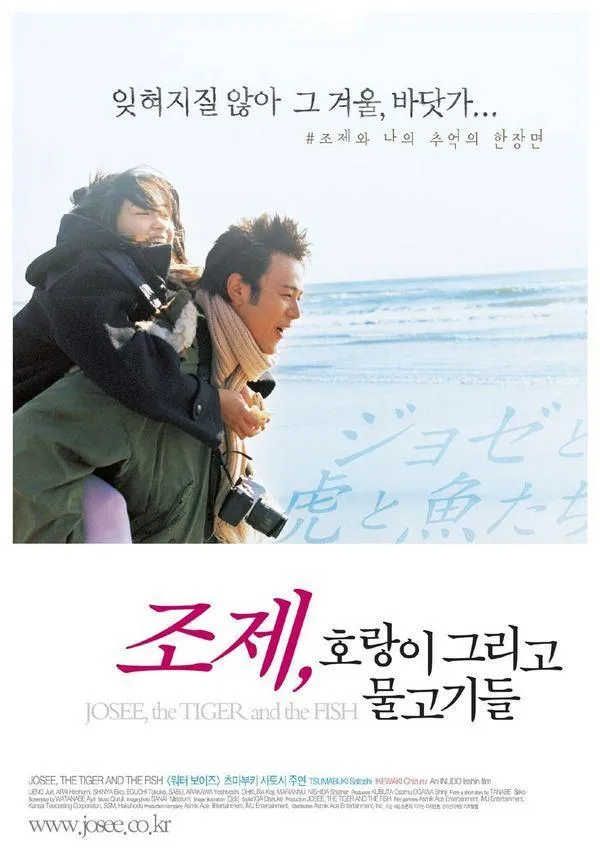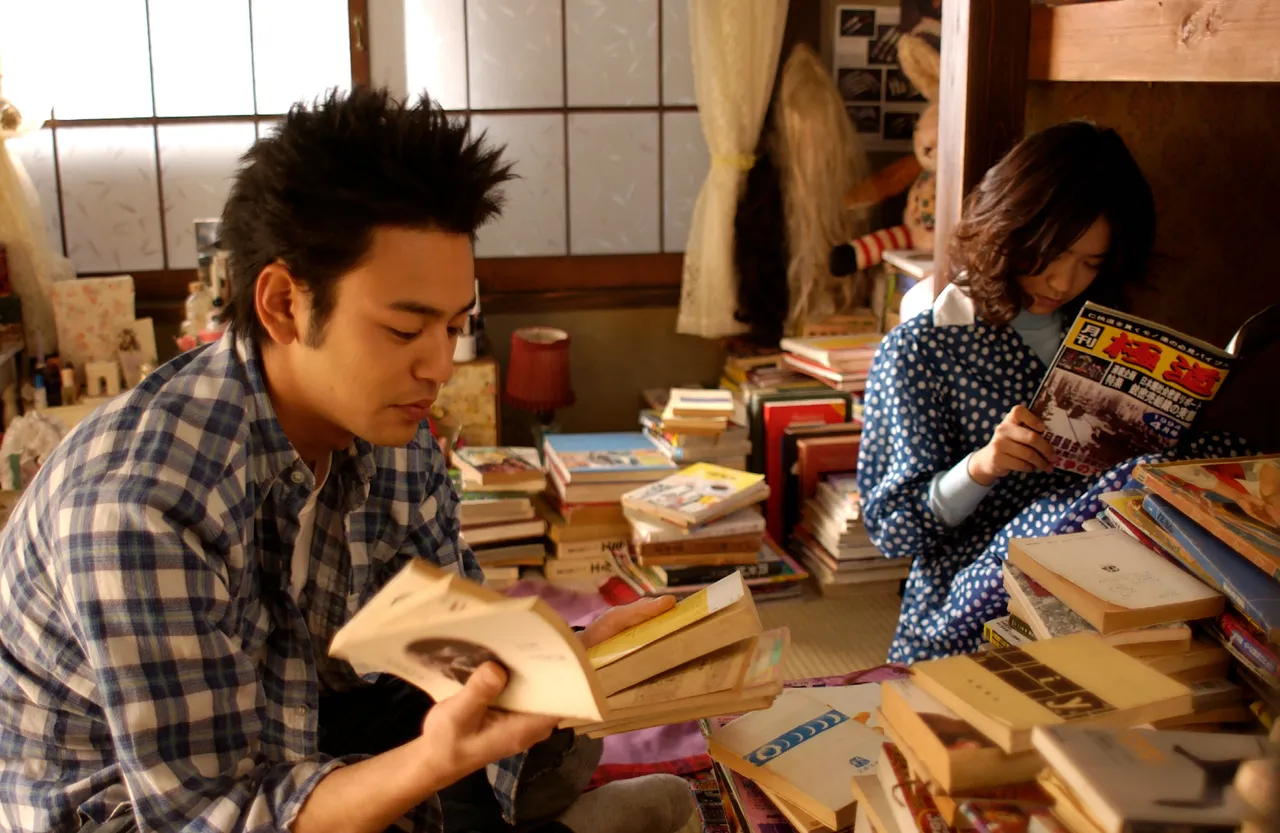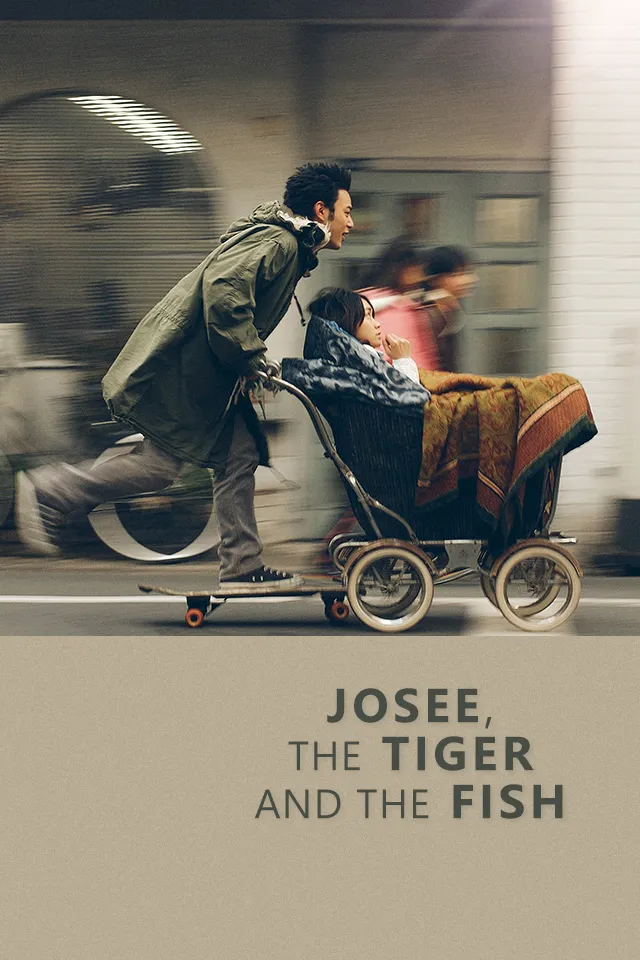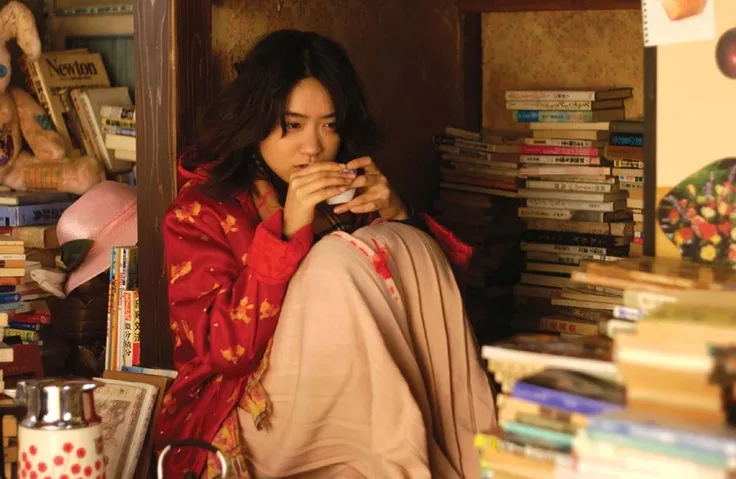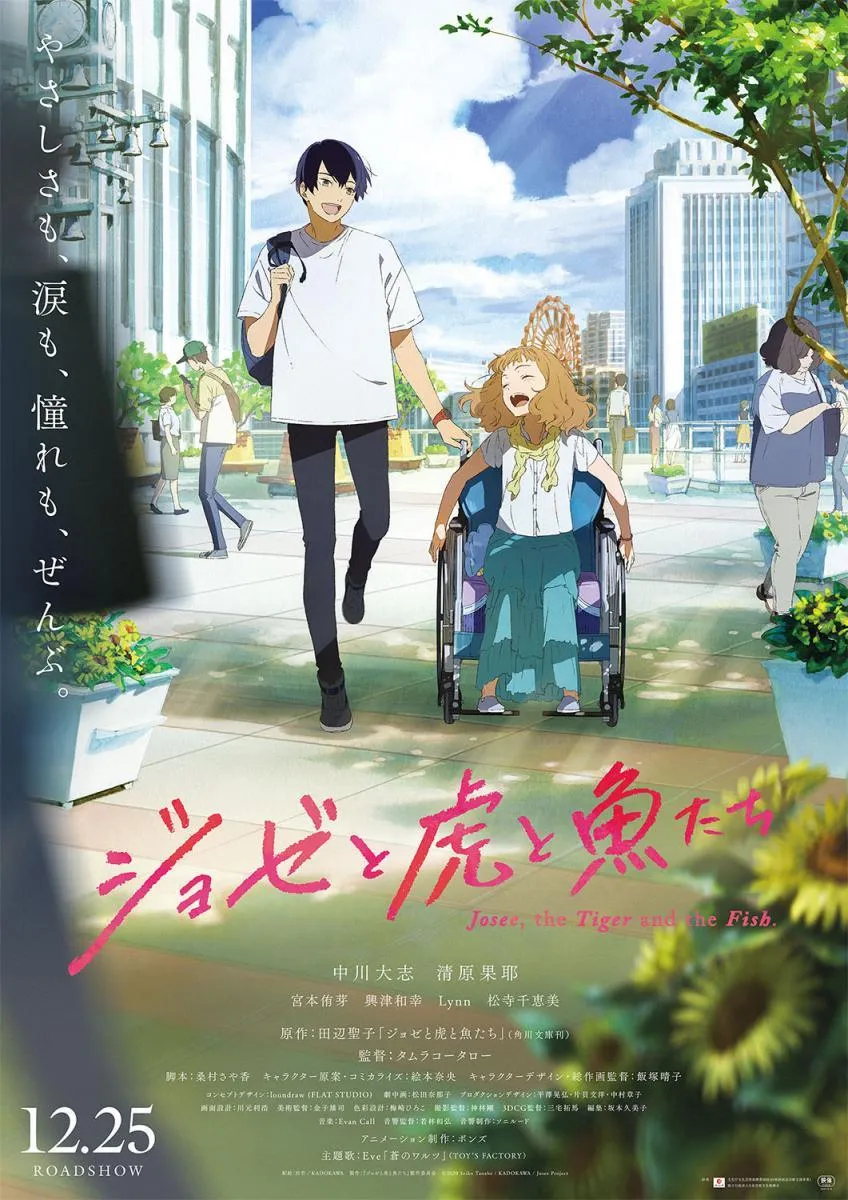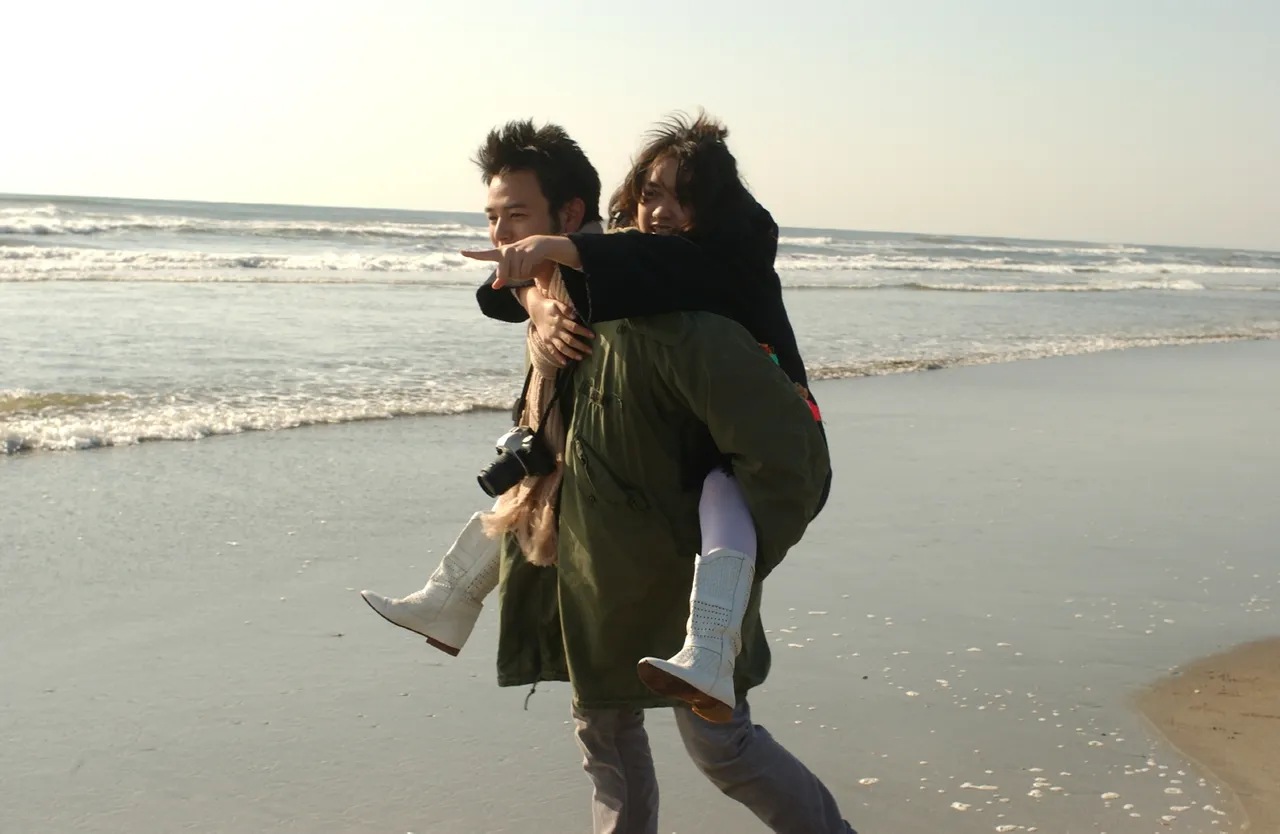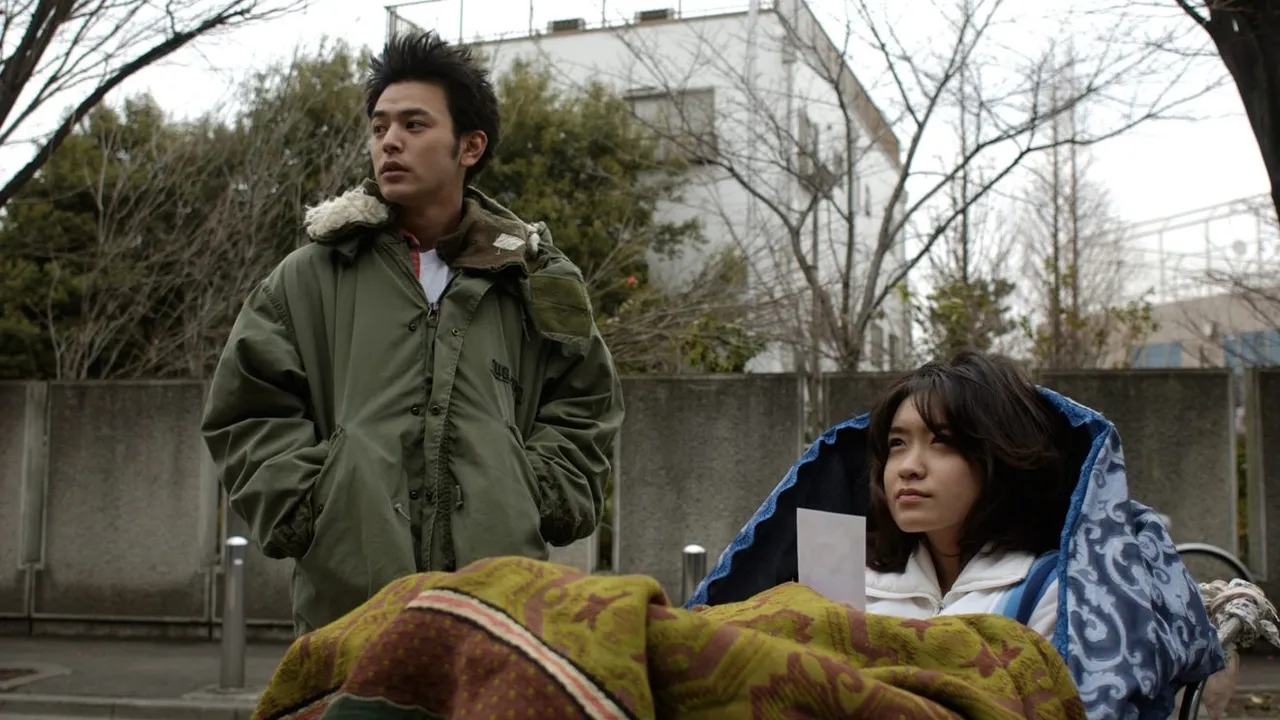
Una historia conmovedora
Shortly after uploading the review of the Korean movie Moonlit Winter, without meaning to, I saw another Asian film, in this case Japanese, equally dramatic and romantic, but with great differences in the central plot and characters. And it is that story that I want to talk about today because I found it moving in more ways than one.
Poco después de subir la reseña de la película coreana Moonlit Winter, sin pretenderlo, vi otra película asiática, en este caso japonesa, igualmente dramática y romántica, pero con grandes diferencias en la trama central y en los personajes. Y es de esa historia de las que les quiero hablar hoy porque me pareció conmovedora en más de un sentido.
Joze to tora to sakana tachi, translated as Josee, the Tiger and the Fish is a film directed by Isshin Inudô, with a script by Aya Watanabe, based on a short story by Seiko Tanabe, and which tells a love story so beautiful and moving that despite having been released a little less than twenty years ago, two remakes of it have already been made, the first in Japan in an anime version and the second in live action in South Korea.
In the film we follow the story of Tsuneo, a young university student who works part-time in a small restaurant where one day other men talk about a poor-looking old woman who, every day very early in the morning, walks the streets of the city walking a baby carriage covered with a blanket. Between heavy jokes and with real curiosity, both Tsuneo and the viewers begin to ask the same thing: what is the old woman carrying in the car? could it be drugs? trash? frets? One day, without meaning to, Tsuneo bumps into the old woman and discovers the contents of the mysterious car: it's a young woman, the old woman's granddaughter. Handicapped. Her name is Kumiko.
Joze to tora to sakana tachi, traducida como Josee, el tigre y el pez es una película dirigida por Isshin Inudô, con guión de Aya Watanabe, basado en un relato corto de Seiko Tanabe, y que cuenta una historia de amor tan bonita y conmovedora que a pesar de haberse estrenado hace poco menos de veinte años, ya se han hecho dos remakes de ella, el primero en Japón en versión anime y el segundo en live action en Corea del Sur.
En la cinta seguimos la historia de Tsuneo, un joven estudiante universitario que trabaja a tiempo parcial en un pequeño restaurant en el cual un día otros hombres conversan sobre una anciana de aspecto pobre que, cada día muy temprano por la mañana, recorre las calles de la ciudad paseando un coche de bebé tapado con una manta. Entre bromas pesadas y con verdadera curiosidad, tanto Tsuneo como los espectadores se comienzan a preguntar lo mismo ¿qué lleva la anciana en el coche? ¿serán drogas? ¿basura? ¿trastes? Un día, sin pretenderlo, Tsuneo se topa con la anciana y descubre el contenido del misterioso coche: es una mujer joven, nieta de la anciana. Minusválida. Se llama Kumiko.
Selflessly, Tsuneo accompanies the old woman and Kumiko to her house and they offer to share breakfast (it's early in the morning) at which point Tsuneo notices that the girl can't use her legs. Seeing her get on or off a chair makes a great impression on the protagonist due to Kumiko's great energy. At that moment, neither of them suspects that their lives will never be the same again.
De forma desinteresada Tsuneo acompaña a la anciana y a Kumiko a su casa y ellas le ofrecen compartir el desayuno (es temprano por la mañana) momento en que Tsuneo nota que la chica no puede usar sus piernas. Verla subirse a una silla o bajarse de la misma le causa una gran impresión al protagonista debido a la gran energía que tiene Kumiko. En ese momento ninguno de los dos sospecha que sus vidas ya no volverán a ser la misma.
Grown up and raised in the shadows of society for a matter of shame, Kumiko's only contact with the real world are those few minutes that her grandmother takes her out for a walk, although always covered with a blanket, and the books she reads (her favorite author is Francoise Sagan). Reading makes Kumiko travel to distant lands. A scene that I really liked is the moment when Tsuneo sees Kumiko's books and she tells him that all those books were collected by her grandmother from the garbage; It makes us reflect on the treasures that some find in the discards of others and also on how valuable books can be for those who live locked up (due to illness, being in prison). Also, Kumiko has read so many books and from so many different categories that she has reached a level of maturity and wisdom superior to her peers despite not going to university, so what does it really matter? go to a higher school and store information? Or learn, through experiences, to understand the world and to read other people? There are many reflections that can be made from that one scene in a story that lasts just under two hours and that has many more powerful scenes like that.
Crecida y criada a las sombras de la sociedad por un tema de vergüenza, el único contacto de Kumiko con el mundo real son esos escasos minutos que su abuela la saca a pasear, aunque siempre tapada con una manta, y los libros que lee (su autora favorita es Francoise Sagan). La lectura hace viajar a Kumiko a tierras lejanas. Una escena que me gustó mucho es el momento en que Tsuneo ve los libros de Kumiko y ésta le dice que todos esos libros los ha recogido su abuela de la basura; nos hace reflexionar sobre los tesoros que algunos encuentran en los descartes de los demás y también sobre lo valioso que pueden ser los libros para quien vive encerrado (por enfermedad, por estar en prisión). Además, Kumiko ha leído tantos libros y de tan diferentes categorías que ha alcanzado un nivel de madurez y sabiduría superior a sus semejantes a pesar de no acudir a la universidad, así que ¿qué importa realmente? ¿ir a una escuela superior y almacenar información? ¿o aprender, a través de las experiencias, a entender el mundo y a leer a las demás personas? Son muchas las reflexiones que se pueden hacer a partir de esa única escena en una historia que dura poco menos de dos horas y que tiene muchas más escenas poderosas como esa.
Somewhat reclusive due to her upbringing, Kumiko has great qualities that make her charming. For his part, Tsuneo is a cheerful, attractive and popular young man at the university. He would seem like the empty and superficial type of young man, but he also has a sweet and honest side that is stimulated by Kumiko's presence and energy, which is why a beautiful relationship arises between the two that defies the common and leads them to share different experiences and ways of thinking and feeling. I loved the editing of the film, that prologue made through photographs and a voiceover that describes them to us one by one and then tells us the whole story that leads to those images was an effective and captivating way of introducing the story without revealing none of the important character stuff or plot twists, plus it breaks time linearity and that's something I always enjoy.
Algo huraña debido a su crianza, Kumiko tiene grandes cualidades que la hacen encantadora. Por su parte Tsuneo es un joven alegre, atractivo y popular en la universidad. Parecería el tipo de joven vacío y superficial, pero también tiene un lado dulce y honesto que es estimulado por la presencia y la energía de Kumiko, razón por la cual surge entre los dos una hermosa relación que desafía lo común y que los lleva a compartir diferentes experiencias y formas de pensar y de sentir. Me encantó el montaje de la película, ese prólogo hecho a través de fotografías y una voz en off que nos las describe una a una para luego contarnos toda la historia que conduce a esas imágenes fue una forma efectiva y atrapante de introducir la historia sin revelar ninguna de las cosas importantes de los personajes ni de los giros de la trama, además de que rompe la linealidad temporal y eso es algo que siempre disfruto.
The performances are very good and the script too. The story continues its course and has its happy moments, others sad, some that make us sigh and others that make us uncomfortable or make us feel bad, but it's a film that makes us feel at all times and leaves an emotional echo in our body after the movie is over. I haven't seen the Korean version or the animated version, but I would watch this story again because I feel that it touches fibers of our being that need to be shaken from time to time and I recommend it, especially if you like romantic stories and Asian cinema, have any of you seen it? I read you in the comments.
Las actuaciones son muy buenas y el guión también. La historia sigue su curso y tiene sus momentos alegres, otros tristes, algunos que nos hacen suspirar y otros que nos incomodan o nos hacen sentir mal, pero es una película que en todo momento nos hace sentir y que deja un eco emocional en nuestro cuerpo hasta después de terminada la película. No he visto la versión coreana ni la versión animada, pero volvería a ver esta historia porque siento que toca fibras de nuestro ser que necesitan ser sacudidas de vez en cuando y la recomiendo, especialmenta si les gustan las historias románticas y el cine asiático, ¿alguno de ustedes la ha visto? Los leo en los comentarios.

